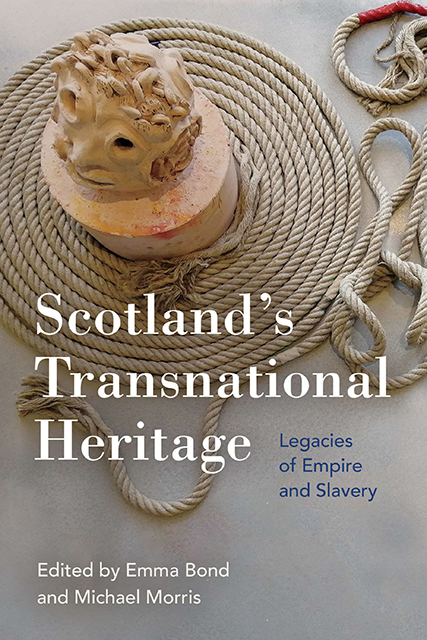Book contents
- Frontmatter
- Contents
- List of Figures
- Notes on Contributors
- Acknowledgements
- Foreword: Fostering Recognition under the Luxury of Amnesia
- Chapter 1 An Introduction to Scotland’s Transnational Heritage: Sites, Things and Time(s)
- Part I Transnational Sites
- Part II Transnational Things
- Part III Transnational Time(s)
- Afterword: Building Solidarity: Moving Towards the Repatriation of the House of Ni’isjoohl Totem Pole
- Index
Chapter 8 - Paisley’s Empire: Representation, Collection and Display
Published online by Cambridge University Press: 25 October 2023
- Frontmatter
- Contents
- List of Figures
- Notes on Contributors
- Acknowledgements
- Foreword: Fostering Recognition under the Luxury of Amnesia
- Chapter 1 An Introduction to Scotland’s Transnational Heritage: Sites, Things and Time(s)
- Part I Transnational Sites
- Part II Transnational Things
- Part III Transnational Time(s)
- Afterword: Building Solidarity: Moving Towards the Repatriation of the House of Ni’isjoohl Totem Pole
- Index
Summary
Paisley’s sons have ever been to the fore among the pioneers of our empire.
Samuel Alberti and Claire Wintle have argued that we must look beyond large institutions to ascertain the relationship between museums, the British Empire, and subsequent transnational history. This chapter discusses the role that Paisley Museum and Art Gallery played in the glorification of the British Empire and introduces current work to critically re-evaluate our collections as part of the Paisley Museum Re-Imagined project. It draws particularly on Claire Wintle, Sarah Longhair and John McAleer’s work on the importance of imperial collections of non-European material culture in establishing British perceptions about the peoples of their empire to justify political and economic subjugation. The town of Paisley, and its Museum and Art Gallery, are presented as a case study of provincial museums as mechanisms of imperialism. Paisley’s transnational exchanges and strong imperial links were instrumental to the museum’s foundation and subsequent additions to the galleries in the late nineteenth century. Collections reflect the town’s role, in for example, furthering Christian missions as well as wealth from local industries, including heavy links with transnational institutions such as the East India Company.
Paisley undoubtedly played an important historical role in Scotland’s imperial history. The town – the largest in Scotland – borders Glasgow to the east and is situated on the White Cart, a tributary of the River Clyde. Glasgow’s advantageous position on the Clyde allowed the city’s merchants to tap into the Atlantic triangular trade and monopolise trade on goods such as tobacco and sugar; which fuelled the huge growth of Glasgow and the emergence of its industrial base. As Glasgow’s immediate neighbour, Paisley and its people benefited massively from nineteenth-century American, West Indian and Asian trades. Paisley had many of the benefits of a booming city within the confinements of a town. Numerous privileged families based in Renfrewshire were involved in furthering, and profiting heavily, from colonial expansion.
The relationship between Scotland and Britain’s empire is long standing, intricate and deeply contested. By the nineteenth century, Scotland had become a global economic force with burgeoning markets across the world as a consequence of the empire’s transnational links.
- Type
- Chapter
- Information
- Scotland's Transnational HeritageLegacies of Empire and Slavery, pp. 120 - 135Publisher: Edinburgh University PressPrint publication year: 2023



